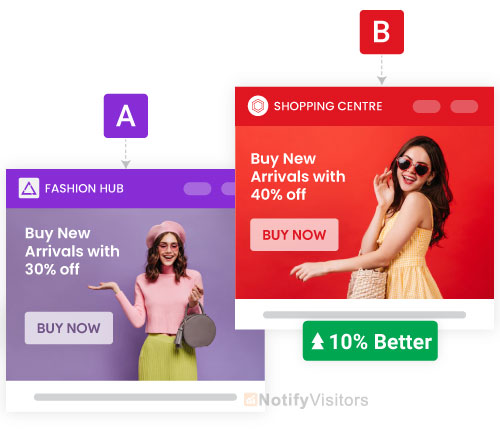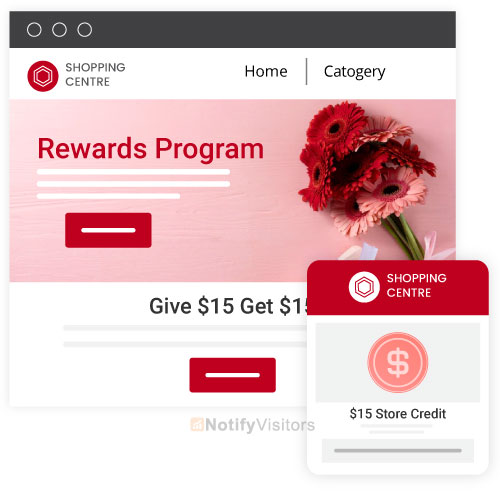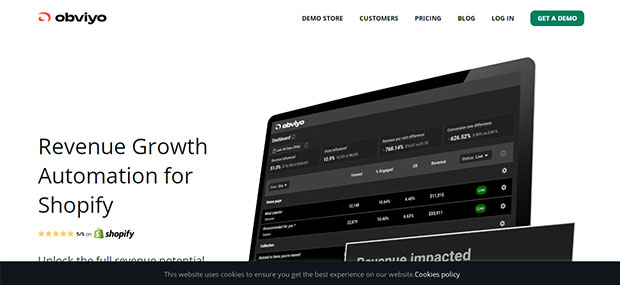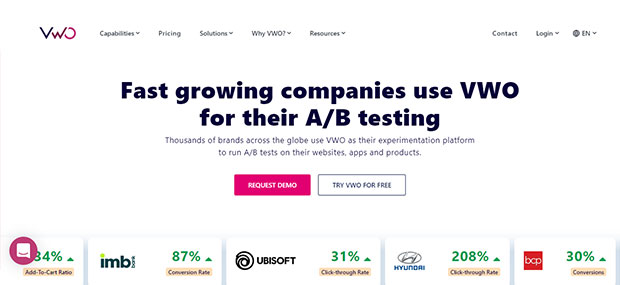Running an eCommerce business can be profitable and successful, but you need to learn tips and tricks to generate sales. There are different ways to do it, and one of them is by improving your website’s conversion rate.
Although this becomes easier when Shopify powers your store – thanks to its large community and other connections – Shopify store owners can still need help with their eCommerce conversion rates due to the lack of helpful information to improve their conversions.
This post has listed some of the most effective ways of Shopify Conversion Optimization.
Contents
What is the E-commerce Conversion Rate?
The eCommerce conversion rate is the percentage of your website visitors who become paying customers.
The formula for the rate of change is:
Conversion Rate = Number of Transactions / Number of Visitors
Now, let’s see nine tips to improve your eCommerce conversion rate for more sales.
9 Best Tips for Shopify Conversion Optimization
1. Optimize your landing page
Landing pages are essential for marketing. A good landing page will convert your customers, and a bad one will drive them away.
Landing pages include design, copywriting, and your products and services. How do you make these products? Is there enough content to entice customers to buy the products? Is your landing page compelling?
View it as a customer would when you’re done writing and designing your landing page.
2. A/B testing

There are several ways to improve conversion rates.
A/B, also known as split testing, compares two versions of the same page to see which performs better. In A/B testing, two different page versions are presented simultaneously to the two groups of visitors.
Before running an A/B test, you must determine if your website is getting enough traffic to produce statistically significant results. If your sample is too small, you won’t be able to learn anything from your results because they will only reflect how many people are using your website.
3. Write a clear product description
Write a clear description of the product. Although products may vary from retailer to retailer, a clear product description helps consumers compare products and supports their decision-making process.
4. Create CRO experiments
You can start experimenting with your online store if your site has enough traffic to pass the A/B test. Create a specific plan for each activity you try to test on your website.
In Google Analytics, goals are a way to measure how well your website drives visitors to accomplish a specific task or goal. Goals can be anything, including purchasing a product, subscribing to a newsletter, or browsing. By setting goals you can track and analyze the data behind customers’ decisions as they move through your site.
5. Use a loyalty program

A great way to retain current customers and attract new ones is to create or integrate a loyalty program into your store.
Consumers are more willing to spend on brands they trust.
Many Shopify apps offer loyalty programs. In addition to free and paid plans, it engages customers and motivates them to use your store and buy from you.
6. Make navigation easy
The ease of navigation is the most helpful feature of the site.
To increase your Shopify store’s eCommerce conversion rate, you must ensure your customers can find what they’re looking for.
The best way to do this is to provide them with an easy-to-use, transparent, responsive navigation menu.
7. Provide attractive discounts, free shipping, and an easy return policy
Offering discounts, free shipping, and an easy return policy are essential for your Shopify store because customers feel you care about their needs and wants. It will create a feeling of loyalty to your store.
Also, consider offering free shipping on orders over a certain amount, as customers shop online more often if given the option of free shipping.
8. Implement up-selling and cross-selling
Upselling and cross-selling influence customers to buy more from you.
You can apply the upsell to promote featured products, highlight a new entry, showcase seasonal offers, and more.
9. Personalization

Another great way to attract customers, get them to make a purchase, and therefore increase your Shopify conversion rate is to offer personalized experiences.
A simple “hello + customer name” is a form of personalization. Loyalty programs also give you personalization options, especially when you can send incentive or pop-up messages to segmented customers.
Tools for Shopify Conversion Optimization
1. NotifyVisitors

NotifyVisitors is a marketing automation software that is used to send personalized push notifications and messages to customers. It offers A/B Testing, heatmaps, and several other tools to optimize conversions.
2. Google Analytics, Google Analytics 360

Many websites rely on Google Analytics to track real-time traffic patterns and visitor behavior, including referrals, sessions, and goal conversions. It is free to use, but there is a paid premium version, Google Analytics 360, for merchants with 10 million visits each month, offering higher and more accurate data.
3. Adobe Analytics

Adobe’s real-time tracker lets you analyze paths across multiple channels, including mobile, video, social, and email. Its easy-to-understand user flow, KPIs, and conversion rates can be used with other Adobe Marketing Suite tools (such as Adobe Target) to test and optimize user experiences.
4. HiConversion

HiConversion, an all-inclusive CRO solution, and Shopify Plus Certified Partner use AI to help e-commerce merchants increase page conversion rates in real time.
Rather than relying on standard A/B testing, HiConversion Optimizer allows stores to experiment with content, style, and layout to find combinations that improve shopping experiences and quickly improve conversion. When it finds a winning combination, the AI automatically adjusts the collection to what works best.
5. VWO

VWO is one of the most popular visual editors and testing tools available. An all-inclusive platform, it provides web analytics and user behavior insights. Then with VWO testing – including A/B testing, multivariate testing, and split testing – you can see how visitors react to changes on your site in real time.
Conclusion
Hopefully, we were able to share with you some things you can do to improve your conversion rates and increase sales for your Shopify store.
Implementing these tips and using these tools will help you get a better conversion rate and engagement.
FAQs
1. What do you understand about conversion rate optimization?
Conversion rate optimization (CRO) is the process by which one can increase the percentage of conversions from a website or mobile app.
2. What is the purpose of conversion rate optimization?
Conversion rate optimization is essential because it reduces customer acquisition costs by getting more value from the visitors and users you already have. It helps you increase revenue per visitor, gain more customers, and enhance your business.
3. What is the conversion rate suitable for Shopify?
Anything above 3.3% is considered outstanding and would be in the top 20% of all Shopify Stores.

























 Email
Email SMS
SMS Whatsapp
Whatsapp Web Push
Web Push App Push
App Push Popups
Popups Channel A/B Testing
Channel A/B Testing  Control groups Analysis
Control groups Analysis Frequency Capping
Frequency Capping Funnel Analysis
Funnel Analysis Cohort Analysis
Cohort Analysis RFM Analysis
RFM Analysis Signup Forms
Signup Forms Surveys
Surveys NPS
NPS Landing pages personalization
Landing pages personalization  Website A/B Testing
Website A/B Testing  PWA/TWA
PWA/TWA Heatmaps
Heatmaps Session Recording
Session Recording Wix
Wix Shopify
Shopify Magento
Magento Woocommerce
Woocommerce eCommerce D2C
eCommerce D2C  Mutual Funds
Mutual Funds Insurance
Insurance Lending
Lending  Recipes
Recipes  Product Updates
Product Updates App Marketplace
App Marketplace Academy
Academy

